Physical Address
304 North Cardinal St.
Dorchester Center, MA 02124
Physical Address
304 North Cardinal St.
Dorchester Center, MA 02124
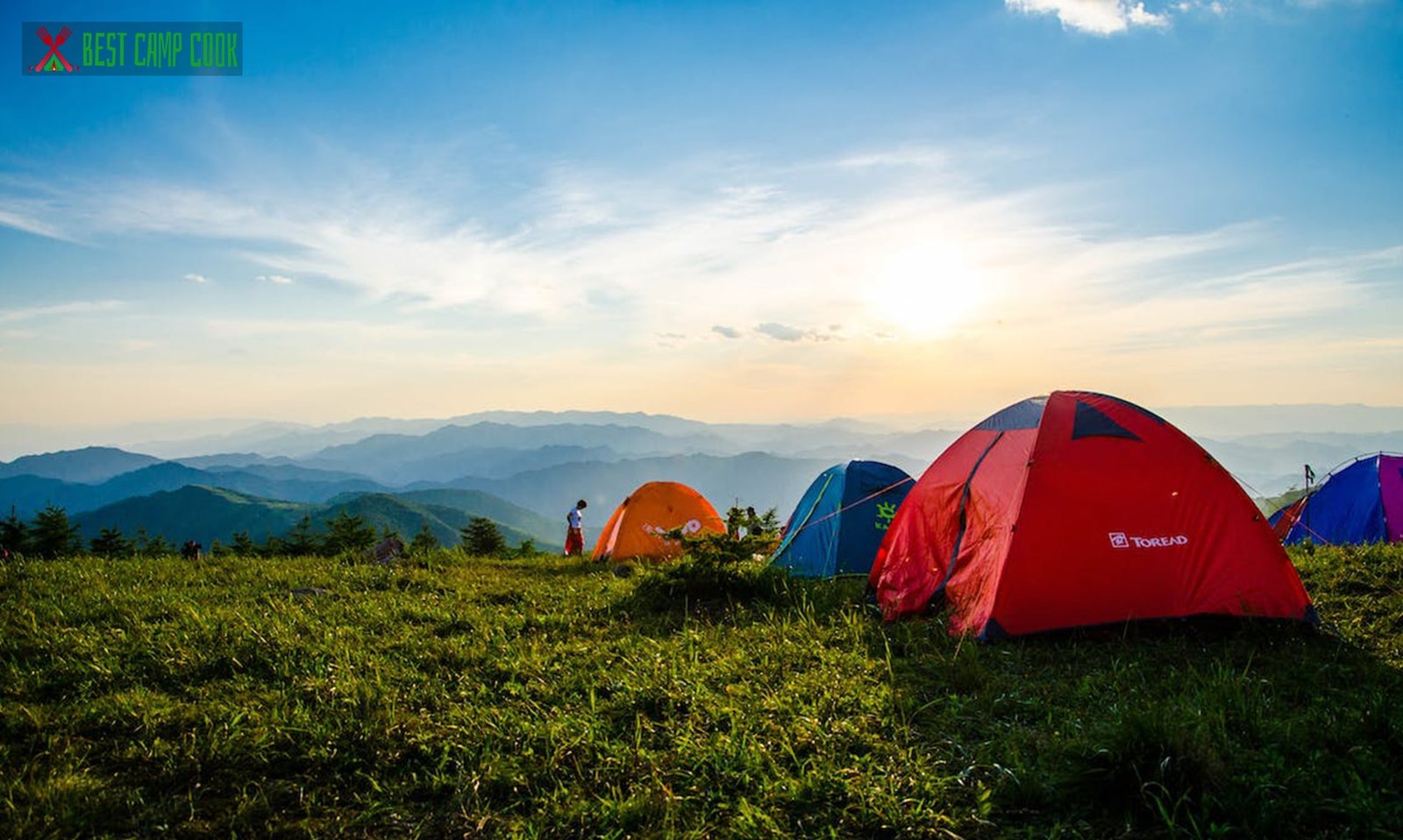
Are you tired of struggling to find a proper storage solution for your camping gear? Look no further! In this short guide, we will reveal the secrets of efficient and hassle-free storage for your beloved outdoor equipment.
Discover the best techniques, tips, and tricks on how to store camping gear and keep it in pristine condition for your next adventure. Say goodbye to tangled gear, misplaced items, and unnecessary stress.
Whether you’re a seasoned camper or a newbie, this guide has got you covered. Get ready to unlock the secrets of organized camping gear storage and make your outdoor experiences even more enjoyable. Let’s dive in and revolutionize the way you store your camping gear!
Main Summary: How to Store Camping Gear with Ease?
Simplify camping gear storage by following these steps: 1. Clean and dry equipment thoroughly. 2. Organize items by category. 3. Utilize stackable storage bins or hanging solutions to maximize space. 4. Keep gear in a cool, dry place. 5. Regularly inspect and maintain equipment.
Camping trips are an exhilarating and adventurous way to escape the hustle and bustle of everyday life. The great outdoors beckons with its fresh air, stunning landscapes, and opportunities for exciting activities.
But once the camping trip is over, it’s time to face the daunting task of storing all your camping gear. Efficient organization is the key to keeping your camping equipment in good condition and ready for your next adventure. In this article, we will provide you with valuable tips and techniques to help you store your camping gear effectively.
Before you begin organizing, take inventory of all your camping gear. This will give you a clear idea of what you have and help you plan for storage accordingly.
Group similar items together based on their functionality or purpose. Categories can include tents, sleeping gear, cooking equipment, lighting, and so on. Sorting your gear will make it easier to locate specific items when needed.
Before storing your camping gear, make sure to clean each item thoroughly. Follow the manufacturer’s instructions for cleaning different types of equipment, such as tents, sleeping bags, and cooking utensils.
Inspect your gear for any signs of damage or wear and tear. Repair or replace any faulty components to ensure that your gear is in good working condition for your next camping trip.
Select storage containers that are suitable for the size and shape of your camping gear. Avoid using containers that are too large, as they can take up unnecessary space and lead to disorganization.
Using clear containers allows you to easily see the contents without having to open them. This can save you time when searching for specific items and help maintain an organized storage area.
Maximize vertical space by utilizing hanging storage solutions such as hooks, racks, or hangers. These are great for hanging items like lanterns, cooking utensils, or wet gear that needs to dry.
Storage bags and pouches are ideal for keeping small items organized and easily accessible. They are particularly useful for storing smaller camping essentials like matches, lighters, first aid kits, and toiletries.
Label each storage container with its contents or category. This will help you quickly locate specific items and maintain an organized system, especially when you have multiple containers.
Consider categorizing your gear based on how frequently you use it. Items that you use frequently should be easily accessible, while those used less often can be stored in less accessible areas.
Make use of vertical space by installing shelves, hooks, or hanging storage solutions. This allows you to maximize the available storage area and keeps your gear off the ground.
If space is limited, utilize under-bed storage containers or bags to store gear that is not frequently used. This is a great way to utilize otherwise unused space in your home or storage area.
Select a storage area that is dry and well-ventilated. Avoid areas prone to moisture, such as basements or attics, as they can lead to damage or mold growth.
If possible, consider storing your camping gear in a climate-controlled environment. Extreme temperatures and humidity can adversely affect the quality and lifespan of your gear.

Image Source: Pexels
When it comes to storing your camping gear, utilizing advanced storage solutions can make a significant difference in keeping everything organized and easily accessible. Here are some innovative ideas to maximize space and efficiency:
One of the key principles of efficient gear storage is sorting and categorizing your camping equipment. By grouping similar items together, you can easily locate what you need when it’s time to pack for your next trip. Consider creating separate sections or containers for different categories such as cooking gear, sleeping essentials, lighting equipment, and so on.
Make the most of your storage area by utilizing vertical space. Install shelves, hooks, or pegboards to hang and store items such as camping chairs, backpacks, and lanterns. Hanging gear not only saves space but also keeps them easily accessible and visible.
Investing in gear-specific storage solutions can help protect your equipment and make organization a breeze. Here are some ideas for different types of camping gear:
Store your tent in a designated bag or container to keep it clean and protected. Make sure it is dry before packing it away to prevent mold or mildew growth. Consider using a gear loft or hammock to hang your tent, saving floor space.
Avoid compressing your sleeping bag for extended periods as it can affect its insulation properties. Instead, store it in a breathable sack or hang it in a closet. Periodically fluff and air out your sleeping bag to maintain its loft.
For your camping kitchen essentials, use stackable plastic bins or storage containers to keep utensils, plates, pots, and pans organized. Consider using compact and collapsible kitchenware to save space.
Keep your flashlights, headlamps, and lanterns in a designated container or drawer. Ensure that batteries are removed or disconnected to prevent corrosion. Consider using a charging station for rechargeable lights.
Maintaining an inventory of your camping gear and labeling storage containers can significantly streamline your storage system. Label each container with its contents, making it easy to locate specific items. Create a checklist or use a digital inventory tracking system to keep track of your gear and ensure nothing is missing.
Proper cleaning and maintenance of your camping gear are essential for its longevity. Before storing, ensure that all items are clean and dry to prevent mold or mildew growth. Inspect gear for any damage or repairs needed, and address them promptly.
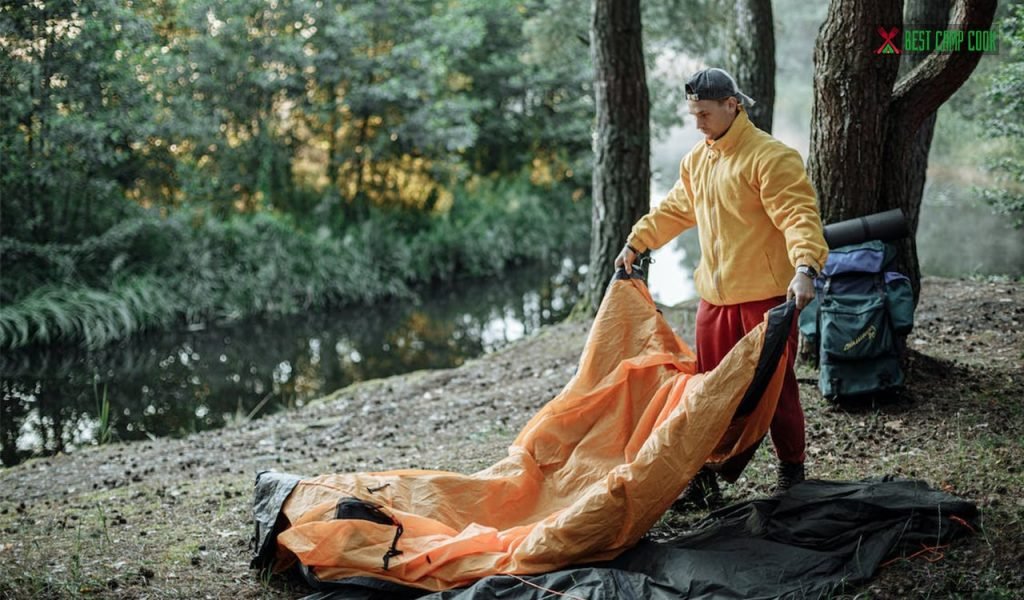
Image Source: Pexels
Properly cleaning your camping gear after each adventure significantly extends its lifespan. Outdoor excursions expose gear to dirt, moisture, and other elements that can cause wear and tear over time. By cleaning your gear, you remove these contaminants, preventing potential damage and ensuring your equipment lasts for many camping trips to come.
Clean gear performs better. Take, for example, a tent. A dirty or damp tent can develop mold, compromise its waterproofing, and even emit unpleasant odors. By thoroughly cleaning and drying your tent, you maintain its functionality and maximize its performance in the outdoors.
Maintaining hygiene and comfort is crucial while camping. Cleaning your camping gear, such as sleeping bags, cooking utensils, and water bottles, eliminates bacteria, odors, and potential health risks. By keeping your gear clean, you promote a healthier camping environment and ensure a comfortable experience for yourself and your fellow campers.
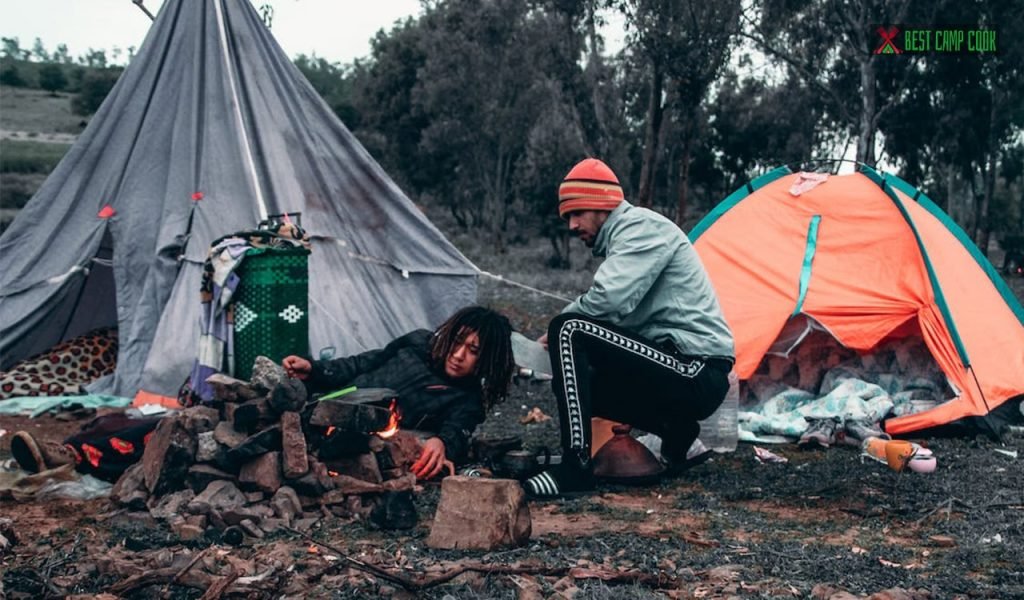
Image Source: Pexels
Investing in durable storage containers and bags is a game-changer when it comes to storing camping gear. Consider using clear plastic bins or sturdy duffel bags with proper sealing capabilities. These containers allow you to easily view and access your gear while keeping it protected from dust, moisture, and pests.
Grouping similar camping gear items together not only saves space but also makes it easier to locate specific items when you need them. For example, store cooking utensils, pots, and pans in one container, and keep camping tools, such as knives, multi-tools, and matches, in another. This grouping strategy streamlines your packing and unpacking process, saving you time and effort.
When storing your camping gear, make use of those often-overlooked dead spaces. For instance, consider utilizing the interior space of larger camping gear items, like backpacks or coolers, to store smaller items such as headlamps, batteries, or cooking spices. This clever utilization of space maximizes your storage capacity and keeps everything neatly organized.
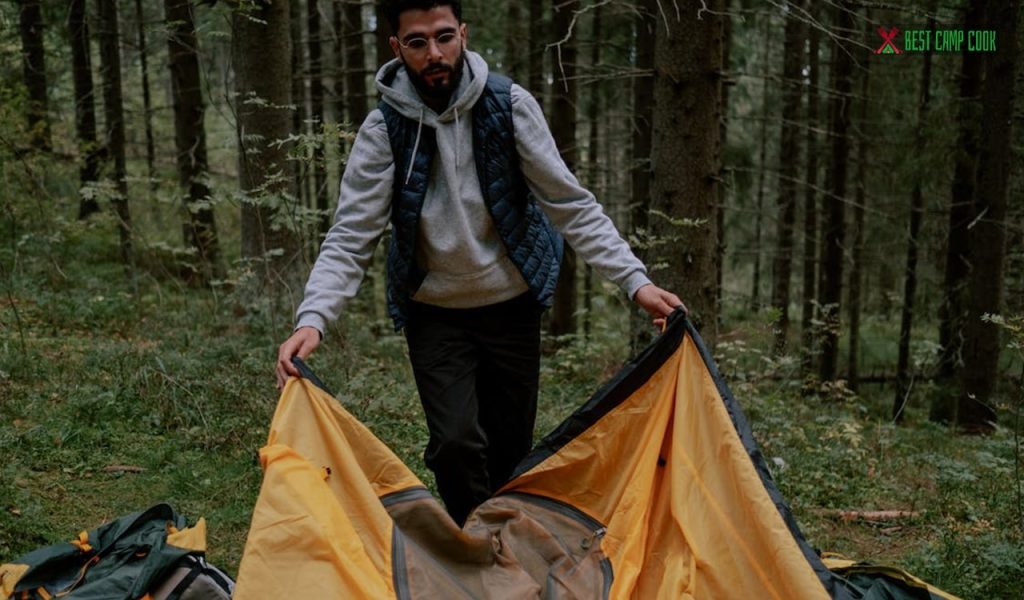
Image Source: Pexels
Regularly inspect your camping gear for any signs of damage or wear. Check your tent for tears, your sleeping bag for loose seams, and your stove for any malfunctioning parts. By identifying and addressing these issues early on, you can prevent further damage and ensure that your gear is in optimal condition for your next camping trip.
Each piece of camping gear comes with its own set of care instructions. Familiarize yourself with these instructions and follow them diligently. Properly storing your gear according to the manufacturer’s guidelines helps maintain its quality, functionality, and warranty coverage.
In addition to cleaning and inspecting your gear, remember to maintain the accessories that support its performance. This includes regularly checking and replacing tent stakes, cleaning and lubricating zippers, and ensuring that camping stove fuel lines are clean and free from blockages. These small maintenance tasks go a long way in keeping your gear functioning smoothly.
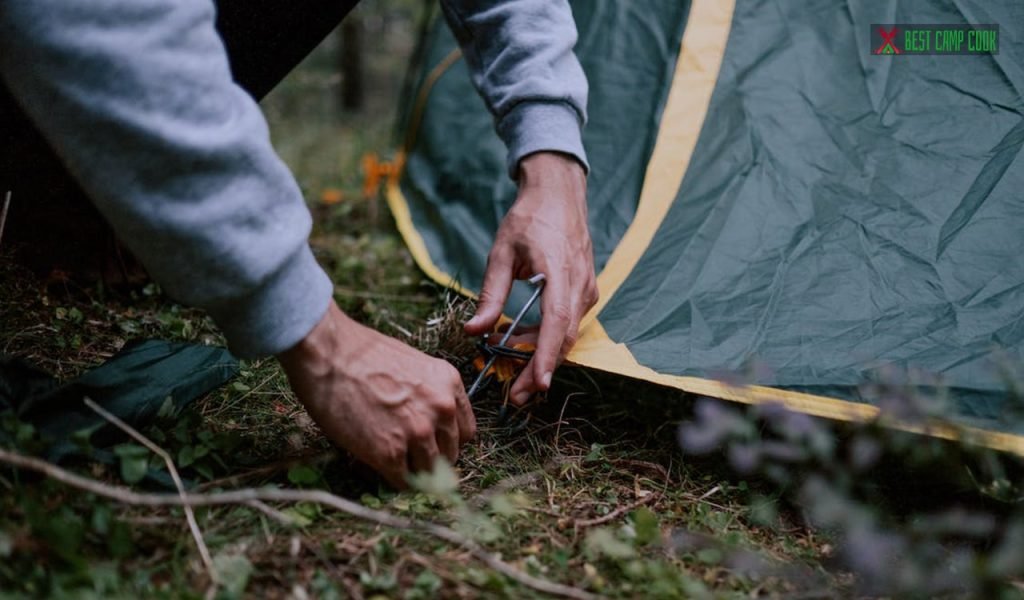
Image Source: Pexels
Moisture can lead to various issues, such as mold, mildew, rust, and material deterioration. Understanding the potential consequences of moisture damage will emphasize the importance of taking preventive measures.
Identifying the sources of moisture is crucial for devising suitable protection strategies. Rain, condensation, high humidity, and damp environments are common sources that can compromise the integrity of your camping gear.
Before storing your camping gear, make sure to thoroughly clean and dry each item. Remove dirt, mud, and debris, and allow them to air dry completely. Moisture trapped in gear during storage can lead to unpleasant odors, mold growth, and corrosion.
Ensure that all components of your gear are completely dry before storing them. Pay special attention to items such as tents, sleeping bags, and backpacks. Inspect zippers, seams, and fabric for any residual moisture and address them accordingly.
Invest in waterproof storage containers or bags to provide an additional layer of protection against moisture. These containers should have tight seals and be made from materials that can withstand potential exposure to water.
For smaller items or camping clothing, consider using airtight bags or compression sacks. These will not only save space but also prevent moisture from seeping in and damaging your gear.
Desiccants are substances that absorb moisture from the surrounding environment, helping to maintain dry conditions within your storage containers. Common desiccants include silica gel packets, activated charcoal, and moisture-absorbing crystals.
Choose desiccants suitable for camping gear storage. Silica gel packets are readily available and can be placed inside storage containers or individual gear compartments to absorb excess moisture.
When storing camping gear, avoid sealing them in airtight or plastic bags without providing sufficient ventilation. Sealed spaces can trap moisture and create a conducive environment for mold and mildew growth.
Opt for storage solutions that allow air circulation, such as mesh bags or breathable fabric containers. These will help prevent the buildup of moisture and promote better airflow, reducing the risk of dampness.
Elevate your gear off the ground to minimize the chances of moisture seeping in from below. Place gear on raised platforms, shelves, or pallets to create a barrier between the floor and your belongings.
Storing gear on racks or shelves provides additional airflow and prevents direct contact with potentially damp surfaces. It also helps organize your equipment efficiently, making it easier to access when needed.
If possible, store your camping gear in climate-controlled areas. These environments allow you to regulate temperature and humidity levels, minimizing the risk of moisture-related damage.
Maintain appropriate temperature and humidity levels in your storage area. Aim for moderate temperatures and a humidity range of around 40-50% to prevent excessive moisture accumulation.
Regularly inspect your stored camping gear for any signs of moisture, such as dampness, mold, or musty odors. Promptly address any issues to prevent further damage.
If you discover moisture damage or any signs of deterioration, take immediate action to treat and repair the affected gear. This may involve cleaning, drying, or applying appropriate treatments to salvage the equipment.
Jack neglected to protect his camping gear against moisture during storage, resulting in extensive mold growth and damage. He shares his experience and the lessons he learned to help others avoid similar pitfalls.
Sarah, an experienced camper, provides practical tips based on her own successful methods for protecting gear against moisture. Her advice includes personal anecdotes and handy tricks for ensuring dry and well-preserved camping equipment.
To store camping gear properly, first, clean and dry all items thoroughly to prevent mold and mildew. Use waterproof containers or bags to protect gear from moisture and dust. Label each container for easy identification and store them in a cool, dry place away from direct sunlight.
Cleaning camping gear is essential before storage. Follow the manufacturer’s instructions for cleaning each item. Use mild soap and water for tents, sleeping bags, and cooking equipment. Dry everything thoroughly before packing. Store in a clean, dry area to prevent odors and mold growth.
If you don’t have a garage, look for alternative storage solutions. Utilize a spare closet, under-bed storage, or unused space in the attic. Consider renting a storage unit if you have a large amount of gear. Make sure the chosen area is well-ventilated and protected from extreme temperatures.
To store all your camping gear efficiently, sort items by category and use clear plastic bins or storage drawers to keep them organized. Pack smaller items inside larger ones to save space. Consider investing in a gear rack or shelving system to maximize storage in your designated area.
When storing camping gear in a shed, organize it strategically. Use shelves, hooks, and racks to keep items off the floor and easily accessible. Install proper ventilation to prevent humidity buildup. Ensure the shed is weatherproof and secure to protect your gear from the elements and potential theft.
To safeguard camping gear against moisture, ensure all items are completely dry before storage. Utilize waterproof containers or bags and include desiccant or silica gel packs to absorb any moisture. Elevate the gear off the ground when storing and maintain proper ventilation in storage areas.
Use waterproof tarps if storing gear outside and regularly check and dry the items as necessary. These precautions will help preserve your camping gear and prevent damage caused by moisture.